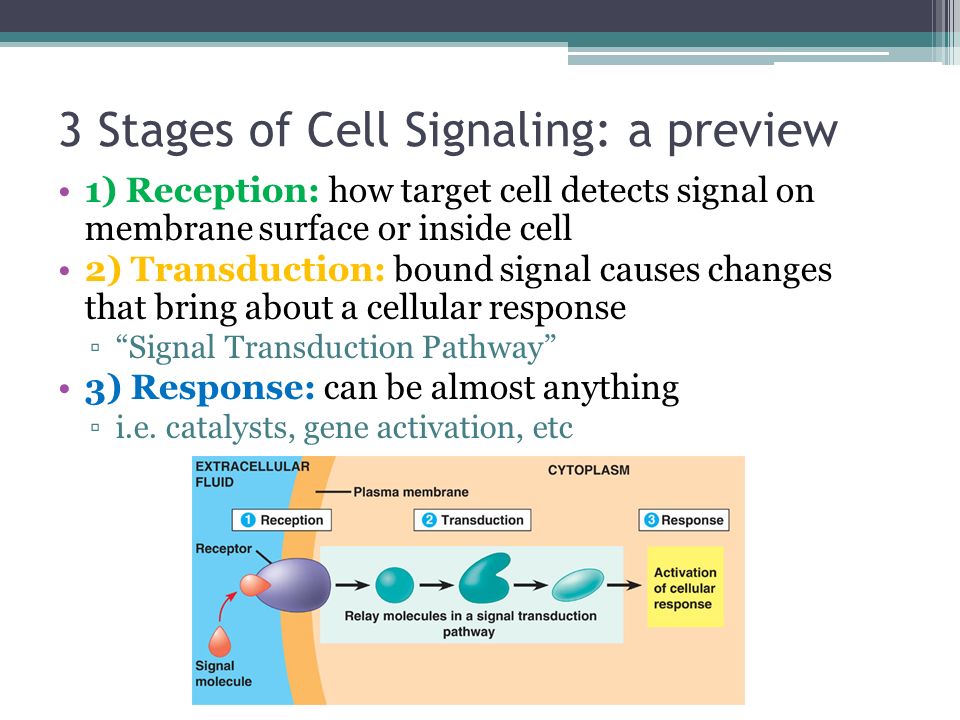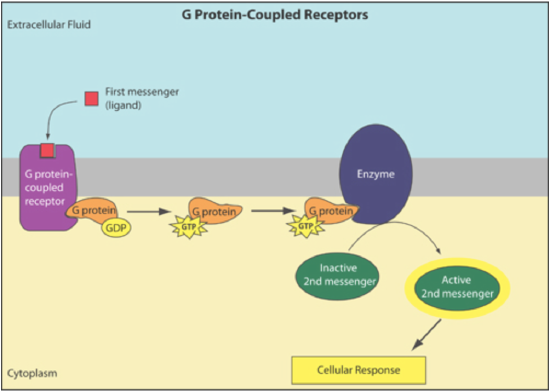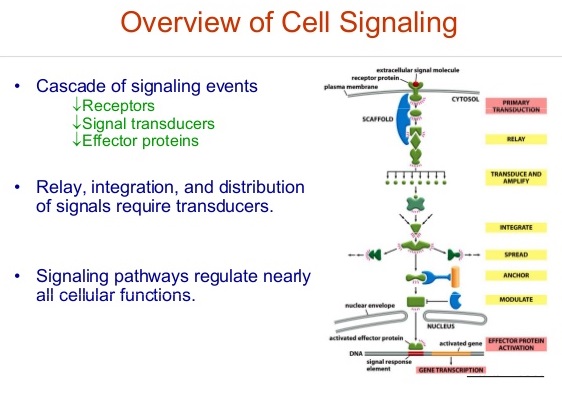3 Stages of Cell Signaling
The first one corresponds to the diploid stage previous to whole genome duplication. Apoptosis from Ancient Greek.

Cell Communication Chapter 11 P Ppt Video Online Download
4-HNE at physiological levels is enzymatically metabolized and at low levels plays an important role as signaling molecule stimulating gene expression enhance cellular antioxidant capacity and exert adaptive.

. The second one is the tetraploid cell stage after the whole genome duplication was acquired and previous to the subclonal diversification. Studied insulin like growth factor 1 receptor IGF1R signaling and created cell line-specific models that show how early events in IGF1R signaling depend on the protein abundance profile of a cell. Signal transduction is the process by which a chemical or physical signal is transmitted through a cell as a series of molecular events most commonly protein phosphorylation catalyzed by protein kinases which ultimately results in a cellular responseProteins responsible for detecting stimuli are generally termed receptors although in some cases the term sensor is used.
Falling off is a form of programmed cell death that occurs in multicellular organisms. During the course of normal development. Phosphoinositide 3-kinase PI3K activity is stimulated by diverse oncogenes and growth factor receptors and elevated PI3K signaling is considered a hallmark of cancer.
Target cells have proteins called receptors. Many PI3K pathway-targeted therapies have been tested in oncology trials resulting in regulatory approval of one isoform-selective inhibitor idelalisib for treatment of certain blood cancers. Apoptosis is also essential for normal embryological development.
In vertebrates for example early stages of development include the formation of web-like tissue between individual fingers and toes Figure 915. Our cumulative findings indicate that Let-7c can inhibit the osteoodontogenic differentiation of IGF-1-treated DPMSCs by targeting IGF-1R via the JNKP38 MAPK signaling. In this study we have estimated the prevalence of 3 different developmental stages for 22 of the breast cancer samples.
The outside environmental cues are translated. Which of the following signal molecules is not used for extracellular signaling. During cell cycle progression cells increase in size G 1 phase which is followed by DNA synthesis and replication S phase further growth G 2 phase and finally by mitosis M phase and cell division.
Interaction of the T cell receptor TCR with an MHC-antigenic peptide complex results in changes at the molecular and cellular levels in T cells. A In plants the cell signaling occurs through phytohormones b Cell signaling is used to study the context of human diseases c Cell signaling is used to study the signaling between cells of an organism d All of the above. Chemical signals are released by a signaling cell and received by a target cell.
Cell cycle assays are used to determine the proportion of cells at different stages of the cell cycle via flow cytometry. Biochemical events lead to characteristic cell changes and deathThese changes include blebbing cell shrinkage nuclear fragmentation chromatin condensation DNA fragmentation and mRNA decay. Depending on cell type damagerepair capacities and cellular metabolic circumstances 4-HNE can promote cell survival or induce cell death.
D All of the above.

Types And Stages Of Cell Signaling Biology Dictionary


No comments for "3 Stages of Cell Signaling"
Post a Comment